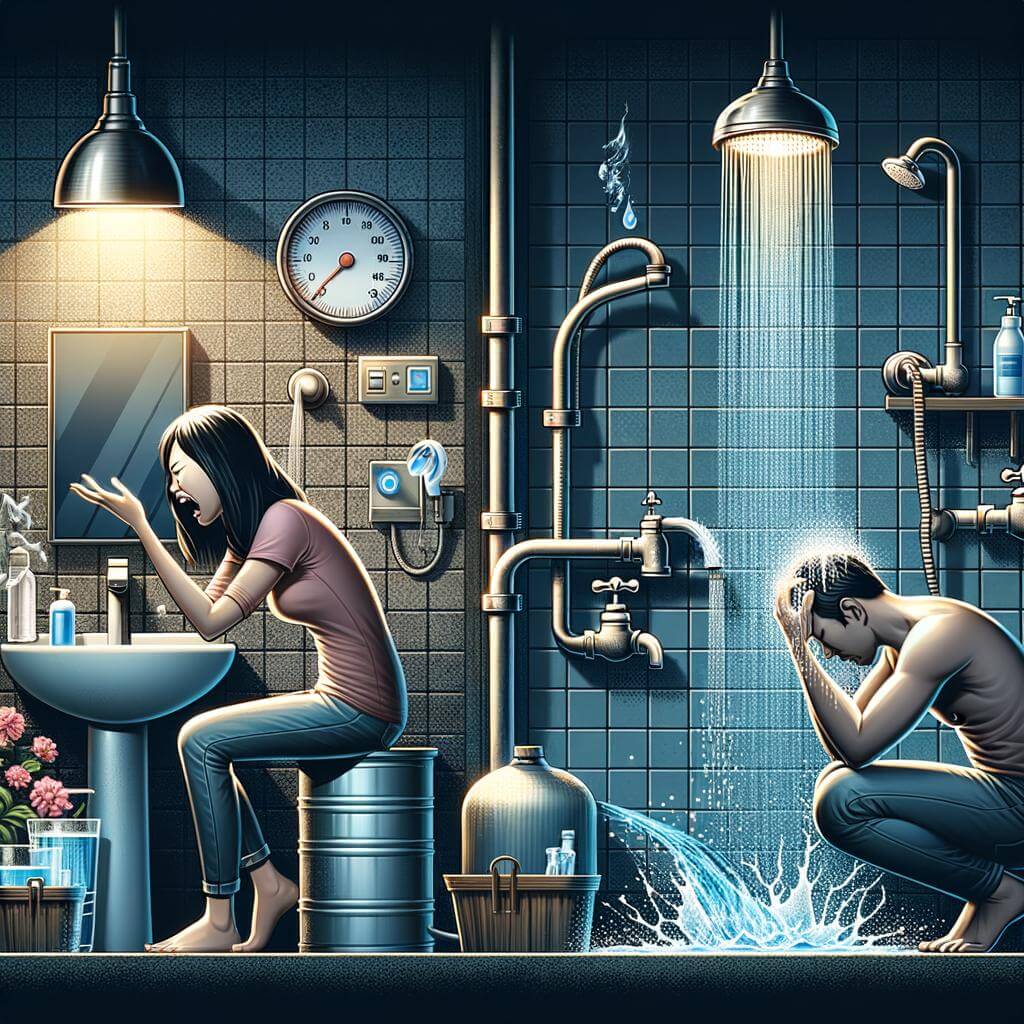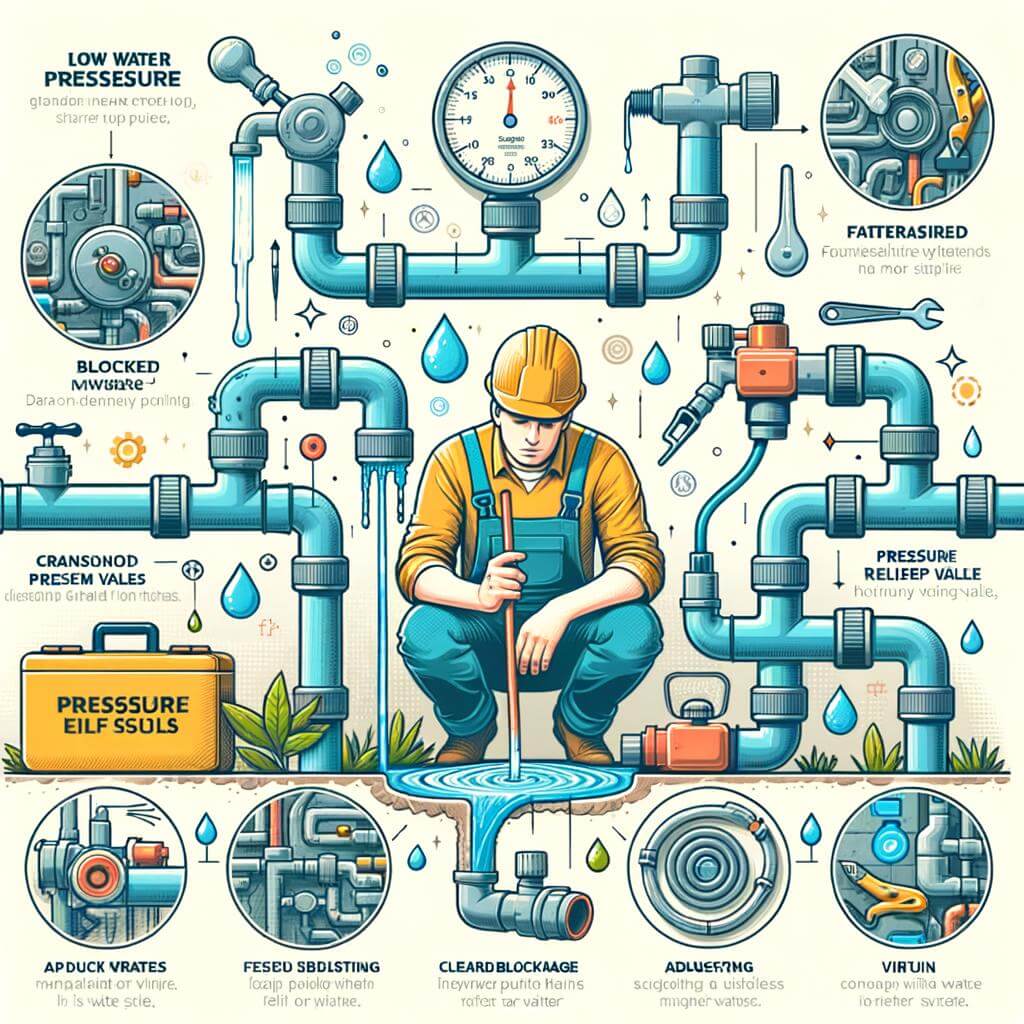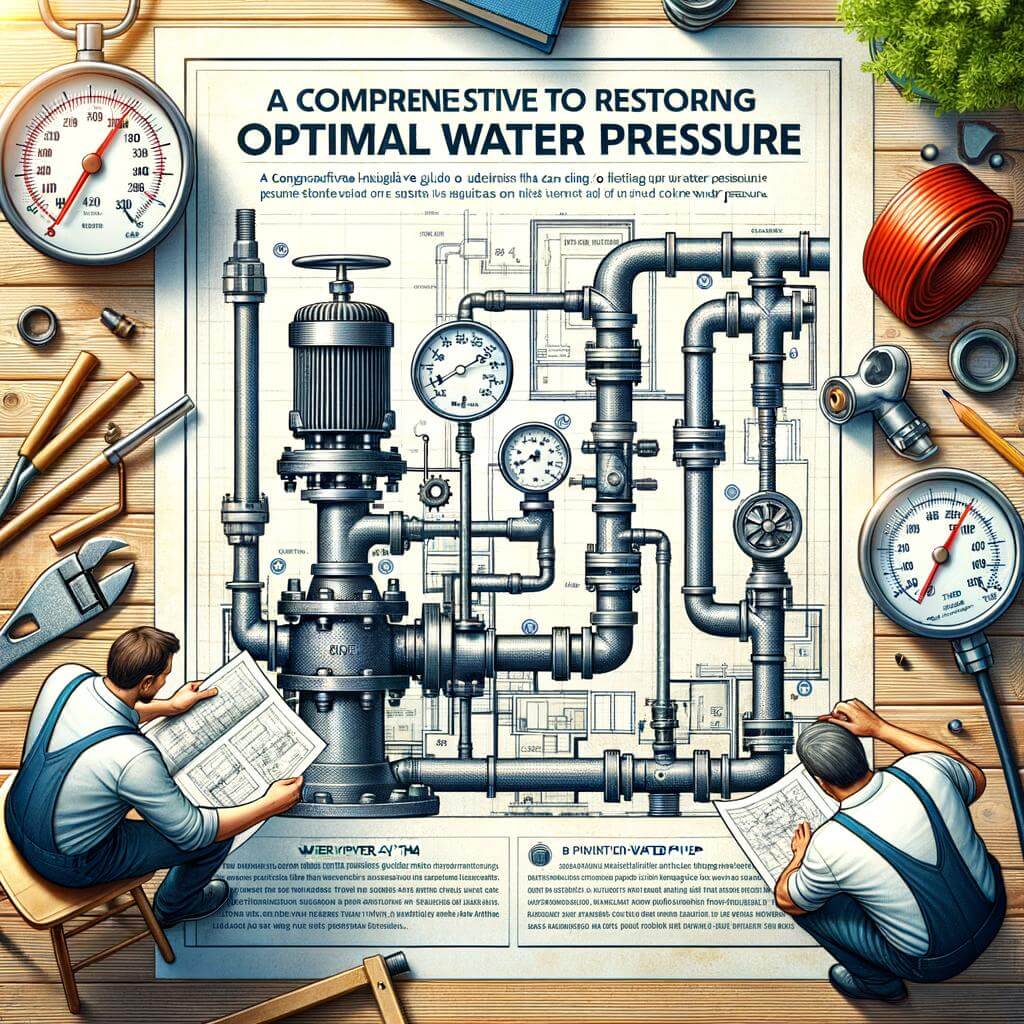Welcome! If you’ve been battling low water pressure in your bathroom sink, this post is for you. We’ll be exploring the various causes for such an issue and shedding light on how you can potentially resolve it. This educational and informative guide provides expert insights and fact-based observations to help you deal with this common household problem. By understanding the root causes behind low water pressure, you can effectively diagnose and fix the issue, helping you save on potential repairs and taking one step towards creating a more comfortable, functional home environment. So, let’s dive in, and by the end of this article, you’ll be well on your way to restoring optimum water pressure in your bathroom.
Understanding the Basics of Water Pressure in Household Plumbing
Factors causing low water pressure
ReasonPotential Resolution Clogged aerator Regular cleaning or replacementLeaks in water lineQuality repair of leaksMunicipal water issuesConsultation with local water department

Signs and Symptoms of Low Water Pressure in Bathroom Sinks
The water pressure in your bathroom sink can be considered low if the force at which the water flows out of the tap isn’t strong enough for commonplace tasks. If it’s taking longer than usual for your sink to fill, or if you’re not receiving a consistent stream, these may be indications your pressure is lower than it should be. Dealing with reduced water pressure can be frustrating, but by looking out for a few key signs, you can start to tackle the problem.
Difficulty in performing basic tasks: If you’re finding it hard to perform even simple tasks like washing your hands or brushing your teeth due to a weak water stream, this is a clear sign that something’s not quite right. Similarly, if your hot water pressure is so low that your shower has more of a trickle than a flow, it’s definitely time to investigate.
- Changes in water flow: Have you noticed that the pressure of your water changes throughout the day? If in the mornings your water pressure is fine and then it dwindles towards the evening, or if your pressure fluctuates between strong and weak, you may have an issue with your water delivery system.
- Strange noises: Any odd sounds coming from your pipes such as squeaks or banging noises could be a sign that you have a pressure problem. These noises can occur when high-pressure water is trying to move through smaller, narrower parts of your pipes.
- Discolored water: If the water from your sink is discolored, this could mean that there’s corrosion in your pipes which can affect your water pressure. This is especially important if you’ve noticed a brown or yellow tinge to your water.
Keeping an eye out for these signs can help you identify low water pressure in its early stages, and address the situation before it gets worse. Knowing these symptoms can save you from more serious problems down the line and aid you in maintaining an efficient water system within your home.

Common Causes for Low Water Pressure in Bathroom Sinks
Experiencing low water pressure from your bathroom sink can not only be a nuisance but might also be indicative of a larger plumbing issue within your household. While a gradual decrease in water pressure is a common experience, a sudden drop might hint towards specific issues that necessitate immediate attention.
Let’s understand the common causes for such instances. The first one that comes to mind is Clogged Pipes. Over time, mineral deposits can accumulate inside your pipes, especially if you live in an area with hard water. This can cause a significant decrease in the water pressure. The next cause could be correlated to Pipe Leakages. A leak in your bathroom’s plumbing system might be diverting water away from your sink, thus reducing the water pressure.
| Problems | Solutions |
|---|---|
| Mineral Deposits | Clean the faucet aerator or hire a professional for deep pipe cleaning |
| Pipe Leakages | Check for damp spots in your house and call a plumber immediately |
But, trapped air in pipes is another potential cause of low water pressure. Trapped Air in the plumbing system can hamper the flow of water causing low pressure in your bathroom sink. Likewise, if you see a significant drop in water pressure during specific times of the day, it might be due to Peak Usage times when a large number of people in your neighborhood are using water simultaneously.
| Problems | Solutions |
|---|---|
| Trapped Air | Release pressure from your pipes by running water through all faucets |
| Peak Usage | Adjust your usage habits or install a water pressure booster |
Understanding these common causes can aid in diagnosing and resolving issues associated with low water pressure in bathroom sinks. However, it’s always best to call a professional if you’re not sure about the origin of the problem.
Implications of Low Water Pressure for Bathroom Fixtures and Your Household
Living with low water pressure in your bathroom can bring about inconvenient experiences. If not addressed properly, it can affect your chores, disrupt your daily routines and potentially cost you a lot of money.
For example, bathroom fixtures rely on a certain amount of water pressure to function correctly. If the pressure is too low, your shower may produce a weak stream, making it difficult to wash. Similarly, a low-pressure problem will make your taps dribble, causing annoyances whether you’re trying to wash your hands, brush teeth, or fill a bathtub.
Facing a low water pressure issue could hint at bigger underlying problems. Hidden leaks in the water system, clogged pipes, corrosion, or dysfunctional pressure regulators are just a few. If these issues are ignored, they can escalate over time and lead to:
- Wasted water and high water bills
- Damage to pipes and water system
- Health problems due to contaminated water
- Annoyances for household chores
Household impact is another concern when coping with low water pressure. A house requires sufficient water pressure for a variety of household chores. Cleaning, laundry, dishwashing, and gardening all necessitate good water pressure. A lack of it can prolong the time taken for these activities and make them more laborious.
Finding a solution to low water pressure in your bathroom starts with understanding the root cause. Once identified and rectified, you can resume your daily routines and rest easy knowing that your household appliances are operating effectively and, importantly, economically.
Here’s a table illustrating different problems and solutions associated with low water pressure in bathroom:
| Problems | Solutions |
|---|---|
| Weak shower stream | Install a low flow shower head |
| Dribbling taps | Clear any obstructions or replace tap |
| High water bills | Investigate for leakage and fix |
| Contaminated water | Use water filters |

How to Troubleshoot and Diagnose Low Water Pressure Issues
If you’ve noticed that your bathroom sink is suffering from low water pressure, you may be dealing with an issue that requires attention both to solve the issue and to prevent possible damage to your plumbing system. Homeowners typically notice this issue when it takes too long to fill the bathroom sink or when the water just trickles out of the tap, despite it being fully open.
There are several potential causes for this problem, which may range from simple fixes to more complex issues that may need a plumber’s expertise. But before you worry about the possible expenses, let’s first inch closer to the typical reasons behind low water pressure directly in your bathroom sink.
Blockages in Pipes or Faucet: Over time, small particles including dirt, sediment, and minerals can build-up inside your pipes or faucet, limiting the flow of water. A good starting point is to test other faucets in your home. If you find that they are all experiencing low pressure, the blockage is likely somewhere in your main water line. However, if it’s just the bathroom sink, the problem probably lies directly within that tap or associated pipes. You might be able to clear the clog by simply cleaning the faucet aerator.
Valve Issues: Check the service and shut-off valves connected to your plumbing system. If these are not fully open, they could be reducing your water pressure. This can often be a simple fix by just ensuring all valves are completely open.
Corroded Plumbing: Especially in older homes, plumbing systems could be suffering from corrosion. This will require a complete pipe replacement, which may need professional help.
Water Leaks: Leaking pipes not only cause water wastage but also lead to low water pressure. If this is your issue, you might notice damp spots around your home.
| Problem | Solution |
|---|---|
| Blockages in pipes or faucet | Clean faucet aerator or call a professional to clear the pipes |
| Valve issues | Ensure all valves are completely open |
| Corroded pipes | Call a professional for pipe replacement |
| Water leaks | Identify and repair leaking areas |
Remember, if you feel unsure about fixing any of these issues by yourself, it’s best to seek help from a professional. It might be more cost-effective to prevent major damages rather than tackling them after they become problematic.
Professional Recommendations and Solutions for Restoring Optimal Water Pressure
One major factor leading to reduced water pressure in bathroom sinks is a build-up of sediment in the plumbing system. Over time, minerals from hard water deposit inside your pipes, constricting the passageway for water and reducing the water pressure. Thankfully, professionals can address this by either cleaning the pipes using special equipment or replacing the affected pipes entirely. High-pressure water jetting and chemical cleaners are two effective methods used by plumbers to clear pipes of sediment blockages.
Another common cause of reduced water pressure is a malfunctioning pressure regulator. In homes with a pressure regulation system, this device ensures that incoming water pressure from the municipal supply is capped at a safe level. If the pressure regulator fails, water pressure across your entire home can be affected. The solution to this problem varies, but professionals often recommend adjusting or replacing the faulty regulator. You can spot a malfunctioning pressure regulator if the water pressure is too high or too low across your entire home, not just in the bathroom sink.
Here’s a summary of some causes of low water pressure and professional solutions:
| Cause | Solution |
| Sediment Build-up | High-pressure water jetting, chemical cleaning or pipe replacement |
| Faulty Pressure Regulator | Adjustment or replacement of the regulator |
In conclusion, diagnosing low water pressure involves assessing your plumbing system, determining the cause, and implementing a professional solution. It is suggested to involve a professional plumber to ensure accurate diagnosis and prevent any further damage to your system. Remember, a well-maintained plumbing system not only ensures good water pressure but also extends the longevity of your pipes and fixtures.
In Conclusion
In conclusion, dealing with low water pressure in your bathroom sink can be a nuisance, but knowledge of the common causes might help you map out a quicker solution. From clogged pipes to malfunctioning pressure regulators, faulty fixtures to municipal water issues, there are plenty of potential culprits. By investigating the problem using the insights described in this article, you can simplify your path to repair and regain that ideal water pressure.
We hope this comprehensive look into water pressure issues has brought you closer to discovering what might be affecting your home’s plumbing system. And remember, if you’re in doubt or the problem seems significant, don’t be afraid to call in professional help. Ensuring your plumbing runs smoothly is a crucial aspect of enjoying your home and preserving its value.
Stay tuned for more handy advice on all aspects of home maintenance and improvement, demystifying complex systems and making homeowner tasks more manageable.




